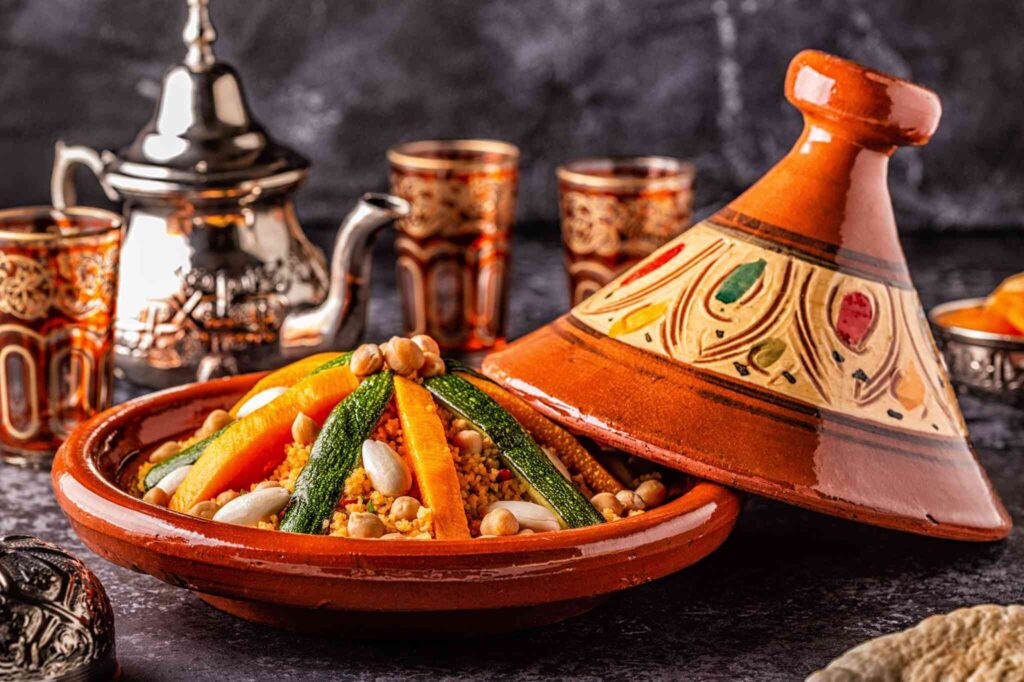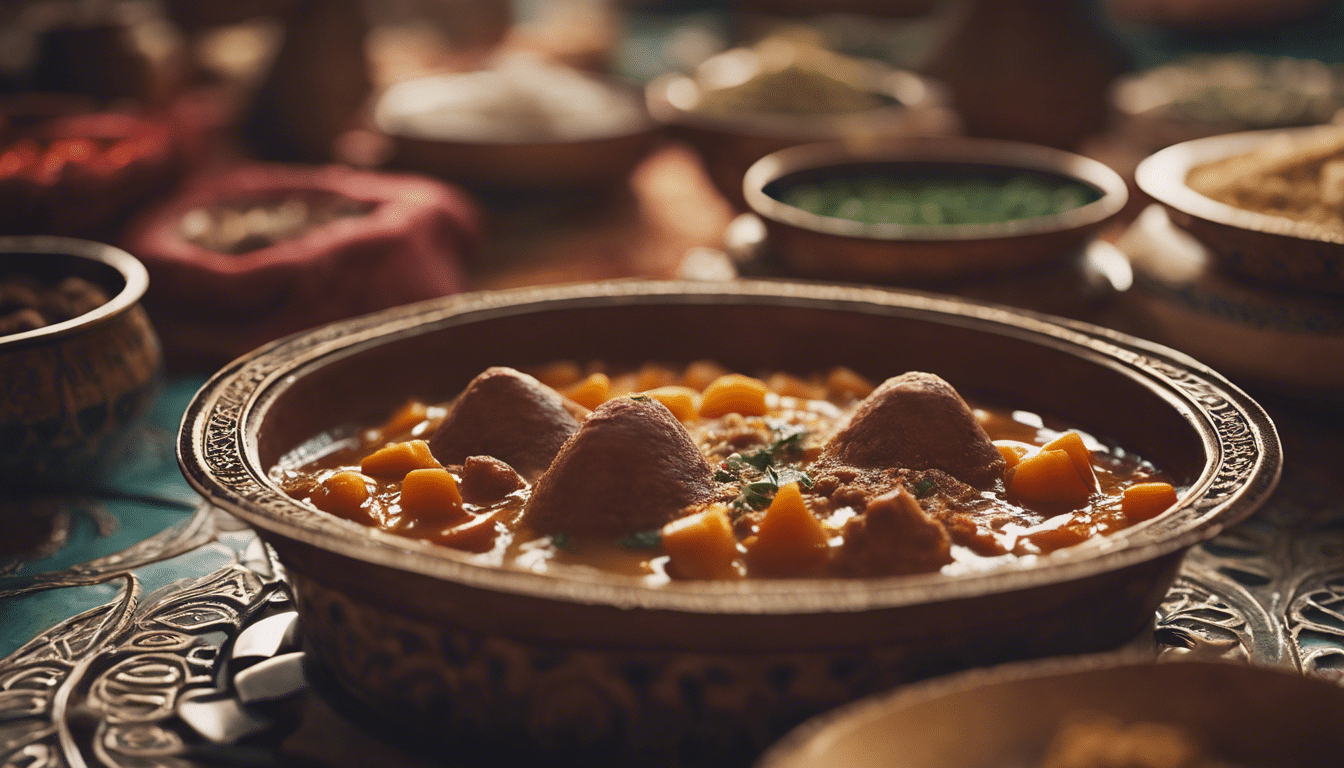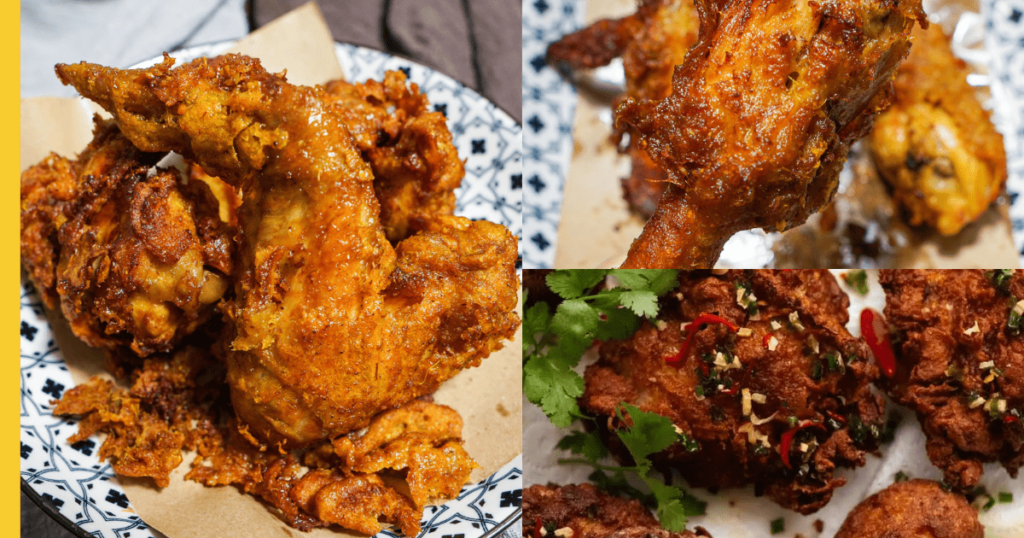A Culinary Journey Through Morocco: Unveiling the Secrets of Tagine Cooking
Related Articles
- A Journey Through Time: The Enduring Allure Of Crêpes
- A Journey Through The Aromatic World Of Pho: A Culinary Adventure In Every Bowl
- The Hottest Pepper Sauces Of 2024: Incorporating Ghost Peppers Into Your Dishes
- A Journey Through Flavor: Exploring The Sizzle And Spice Of Sichuan Chicken
- A Bowl Of Comfort: Exploring The World Of Japanese Ramen
Introduction
Uncover the latest details about A Culinary Journey Through Morocco: Unveiling the Secrets of Tagine Cooking in this comprehensive guide.
A Culinary Journey Through Morocco: Unveiling the Secrets of Tagine Cooking

The tantalizing aroma of simmering spices, the vibrant tapestry of colors, and the comforting warmth of a shared meal – these are the hallmarks of Moroccan cuisine, and at the heart of it all lies the tagine. This iconic conical pot, with its distinctive lid, has been the vessel of Moroccan culinary tradition for centuries, crafting dishes that are as diverse as the country’s landscape.
This article delves deep into the fascinating world of tagine cooking, offering a comprehensive guide that goes beyond mere recipes. We will explore the historical evolution of this culinary technique, uncover the secrets of its unique flavor profiles, and provide practical tips for mastering the art of tagine cooking in your own kitchen.
A Journey Through Time: The Evolution of the Tagine
The tagine, a word that translates to "pot" in Berber, has a history as rich and complex as the dishes it produces. Its origins can be traced back to the Berber tribes who inhabited North Africa, using earthenware pots for cooking over open fires. These early tagines were simple, crafted from clay and often adorned with rustic designs.
Over time, the tagine evolved alongside the cultural exchange between the Berber and Arab populations. The introduction of new materials like iron and copper led to the development of more durable and efficient cooking vessels. The conical lid, a defining feature of the modern tagine, emerged as a clever innovation. Its unique design allows steam to circulate within the pot, ensuring that food cooks evenly and retains moisture.
Beyond the Pot: The Art of Tagine Cooking
The tagine is more than just a pot; it embodies a culinary philosophy that emphasizes slow cooking, the harmonious blending of flavors, and the celebration of diverse ingredients. The slow and gentle heat of the tagine allows flavors to meld and deepen, creating a symphony of taste that is both complex and satisfying.
The Culinary Symphony: Building Flavor in the Tagine
The magic of tagine cooking lies in the careful orchestration of ingredients and spices. Each element plays a crucial role in creating a balanced and harmonious dish. Let’s explore the key components that make up the symphony of flavors in a typical tagine:
- The Base: The foundation of any tagine is the base, typically a combination of aromatic vegetables like onions, garlic, and ginger. These ingredients provide a savory foundation for the dish and release their fragrant oils during the slow cooking process.
- The Protein: Tagines can feature a variety of proteins, from tender lamb and succulent chicken to hearty beef and flavorful seafood. The choice of protein often reflects regional variations and personal preferences.
- The Spices: The heart and soul of a tagine lies in its aromatic blend of spices. Each region of Morocco boasts its own unique spice mix, but common threads include cumin, turmeric, paprika, cinnamon, saffron, and ginger. These spices add depth, warmth, and complexity to the dish.
- The Fruits and Vegetables: Tagines often feature a colorful array of fruits and vegetables, adding sweetness, acidity, and texture to the dish. Dried fruits like apricots and prunes are popular additions, while fresh vegetables like tomatoes, carrots, and zucchini provide vibrant color and nutritional value.
- The Liquid: The liquid in a tagine serves as a medium for cooking and helps to create a rich and flavorful sauce. Water is a common base, but broth, wine, or even fruit juices can be used to add depth and complexity to the dish.

Mastering the Art of Tagine Cooking: A Step-by-Step Guide
Now that we’ve explored the foundational elements of tagine cooking, let’s delve into the practical aspects of preparing a delicious and authentic tagine.
Step 1: Preparing the Ingredients
- Cut and Dice: Start by cutting your vegetables into bite-sized pieces. This ensures that they cook evenly and release their flavors effectively.
- Marinate the Protein: To infuse your protein with flavor, marinate it in a blend of spices, herbs, and a touch of lemon juice. Allow the marinade to penetrate the meat for at least 30 minutes or even overnight.
- Soften the Aromatics: Sauté the base ingredients (onions, garlic, ginger) in a little olive oil until they become fragrant and softened.
/tagine-zucchini-getty-3867-x-2578-56a646603df78cf7728c3324.jpg)
Step 2: Building the Tagine
- Layer the Ingredients: Arrange the ingredients in the tagine, starting with the softened aromatics at the bottom. Place the marinated protein on top, followed by the chopped vegetables and any dried fruits.
- Add the Liquid: Pour in the chosen liquid, ensuring that the ingredients are just covered.
- Season with Care: Season the tagine generously with your chosen spice blend, taking into account the flavors of the ingredients you’ve chosen.
- Cover and Cook: Place the lid on the tagine and simmer over low heat for a minimum of 1 hour or until the protein is tender and the vegetables are cooked through.
Step 3: Finishing Touches
- Adjust the Sauce: Taste the tagine and adjust the seasoning as needed. If the sauce is too thick, add a little more liquid. If it’s too thin, simmer for a few more minutes to reduce the sauce.
- Garnish with Fresh Herbs: Add a touch of freshness and vibrancy to your tagine by garnishing it with chopped cilantro, parsley, or mint.
- Serve with Tradition: Traditionally, tagines are served with warm, fluffy bread for dipping into the flavorful sauce.
Exploring the Diverse World of Tagine Recipes
The beauty of tagine cooking lies in its adaptability. While the basic principles remain consistent, the creative possibilities are endless. Here are a few examples of popular tagine recipes that showcase the diversity of this culinary tradition:
1. Lamb Tagine with Apricots and Almonds:
This classic Moroccan tagine features tender lamb cooked in a rich and aromatic sauce infused with dried apricots, toasted almonds, and a blend of warm spices. The sweetness of the apricots complements the savory flavors of the lamb, creating a truly satisfying dish.
2. Chicken Tagine with Olives and Preserved Lemons:
This refreshing tagine highlights the bright flavors of preserved lemons and olives, which add a tangy counterpoint to the succulent chicken. The addition of saffron adds a touch of luxury and a vibrant golden hue to the dish.
3. Seafood Tagine with Saffron and Vegetables:
Coastal regions of Morocco are known for their delicious seafood tagines. This recipe typically features a combination of fresh fish and shellfish, cooked with saffron, aromatic vegetables, and a hint of chili for a touch of heat.
4. Vegetarian Tagine with Chickpeas and Vegetables:
For a hearty and flavorful vegetarian option, try a tagine featuring chickpeas, carrots, potatoes, and a vibrant blend of spices. The chickpeas add a creamy texture, while the vegetables provide a colorful and nutritious addition.
5. Tagine with Beef and Dates:
This hearty tagine features tender beef cooked with sweet dates, creating a rich and satisfying dish. The dates add a touch of sweetness and a unique depth of flavor to the beef.
Tips for Tagine Cooking Success:
- Choose the Right Tagine: Invest in a high-quality tagine made from earthenware, cast iron, or enameled steel. The material should be heat-resistant and durable enough to withstand the slow cooking process.
- Don’t Overcrowd the Tagine: Leave some space between the ingredients in the tagine to allow for proper steam circulation and even cooking.
- Use Low and Slow Heat: Tagines are best cooked over low heat, allowing flavors to develop slowly and the ingredients to become tender.
- Taste and Adjust: As the tagine cooks, taste the sauce and adjust the seasoning as needed.
- Embrace the Imperfections: Tagine cooking is a forgiving art form. Don’t be afraid to experiment and adjust the recipe to your liking.
Beyond the Kitchen: The Cultural Significance of Tagine Cooking
The tagine is more than just a cooking vessel; it represents a cultural heritage that is deeply rooted in Moroccan traditions. The act of sharing a tagine meal fosters a sense of community and brings people together. The shared experience of breaking bread, savoring flavors, and enjoying the company of loved ones is a cherished tradition in Morocco.
A Culinary Legacy: Preserving the Art of Tagine Cooking
The tagine is a timeless symbol of Moroccan cuisine, a testament to the enduring legacy of its culinary traditions. As we explore the diverse world of tagine recipes and uncover the secrets of its unique flavor profiles, we are not only learning about cooking techniques but also gaining an appreciation for the rich cultural tapestry that makes up Moroccan cuisine.
Conclusion:
From its humble origins to its modern-day popularity, the tagine has evolved into an iconic symbol of Moroccan cuisine. It is a testament to the power of slow cooking, the harmonious blending of flavors, and the celebration of diverse ingredients. By understanding the history, techniques, and cultural significance of tagine cooking, we can embark on a culinary journey that transcends mere recipes, connecting us to a vibrant and enduring culinary tradition.
Closure
Thank you for reading! Stay with us for more insights on A Culinary Journey Through Morocco: Unveiling the Secrets of Tagine Cooking.
Make sure to follow us for more exciting news and reviews.
We’d love to hear your thoughts about A Culinary Journey Through Morocco: Unveiling the Secrets of Tagine Cooking—leave your comments below!
Keep visiting our website for the latest trends and reviews.





